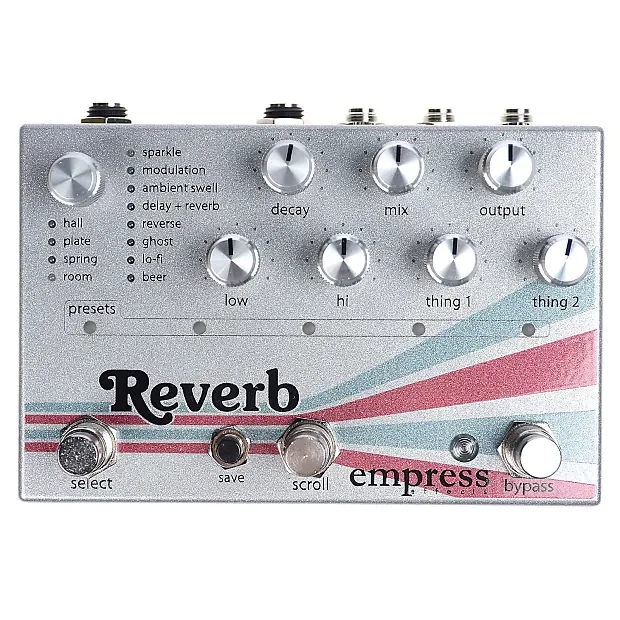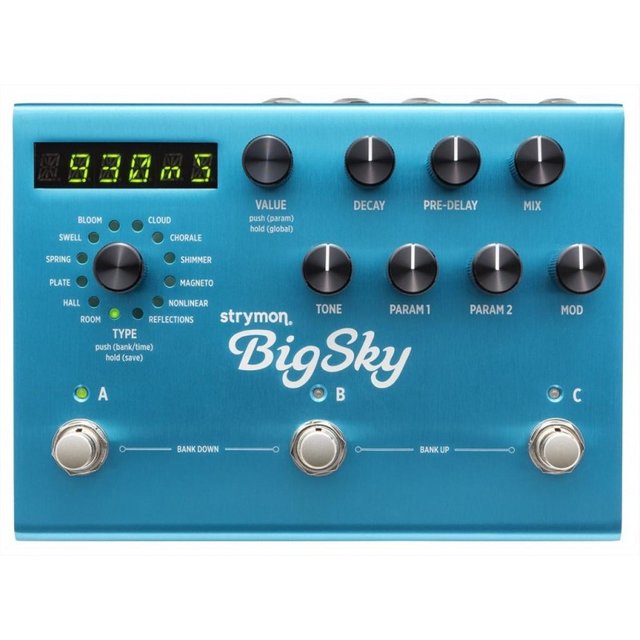Effect processors (Reverberation or Reverb)
Hello everyone it's your sound tech. @jamesub and today on effect processors I will be focusing on the reverberation effect. If you missed the first series on this processors you can check it out through the links at the end of this article.
As we move into the reverb effects, we must first realize that reverb is just a series of delay as all modern reverberation device are capable of all delays effects. However, some device are limited to producing either delay or reverberation. Also, software plug-ins specifically focus on a single function, often in emulation of classic hardware.
What's reverberation:-
Reverberation is the simulation of sound in an acoustical environment such as a concert hall, gymnasium, or bedroom. As we all know, sound bounces back from all the surfaces in a room to the listener or microphone, these bounces are called reflections and the combination of the direct and reflected sound in a room creates a distinctional character for each acoustic environment.
N/B: Reverb must have many delays and regenerations working together in the proper balance combining to create a smooth and appealing sound.
Types of reverb:-
Hall reverb:-
hall indicate a concert hall sound. these are the smoothest and richest of the reverb settings with complex long delay times that blend together to form a delay time longer than two seconds, although user-adjustable controls allow for unnatural settings on hall sounds or any of the basic sounds.
Chamber reverb:-
chambers imitate the sound of an acoustical reverberation chamber, sometimes called an echo chamber. Acoustical chambers are fairly large rooms with hard surfaces. These type of reverb are not very common now that technology is giving us great sounds without taking up so much real estate. The sound of a chamber is smooth, like that of the hall but has a few more mids and highs.
Plate reverb:-
Plates are the brightest-sounding of the reverbs, and their sounds imitate that of a physical plate reverb. A true plate is a large sheet of metal suspended in a box and allowed to vibrate freely. A speaker attached to the plate itself induces sound onto the plate. Microphones are typically mounted on the plate at different locations to provide a stereo return, and the sound of a true plate reverb has lots of highs and is very clean and transparent.
Room reverb:-
A room reverb setting imitates many different types of rooms that are typically smaller than hall or chamber sounds and these can range from a bedroom to a large conference room. Rooms with lots of soft-surfaces have little high-frequency content in their reverberation while those with lots of hard-surfaces have lots of high-frequency content in their reverberation.
Reverse reverb:-
Most modern reverbs include reverse or inverse reverb, and these are simply backward reverb which swells and stops after the original sound has been heard. These can be fairly effective if used in the appropriate context.
Gated reverb:-
Gated reverbs have a sound that is very intense for a period of time and then closes off quickly, and also offer a very big sound without overwhelming the mix.
Other variations of reverberation:-
There are many permutations of the reverberation sounds, you might see bright halls, rich plates, dark plates, large rooms, etc. They can all be traced back to the basic sounds of hall, chambers, plates, and rooms. These sound often have adjustable parameters, which allows us to shape the sounds of our music in other to enhance the artistic vision through technology.
Reverberation effects parameters:-
The sound operator or engineer must be familiar with the parameters in any effects device to be able to customize the effects during production, sound checks, and even during performance.
Predelay:-
Predelay is a time delay that happens before the reverb is heard. This can be a substantial time delay (up to a second or two) or just a few milliseconds. The track is heard clean (dry) first, so the listener gets more of an up-front and close feel, then the reverb comes along shortly thereafter to fill in the holes and add richness.
Diffusion:-
Diffusion controls the space between the reflections. A low diffusion is equated with a very grainy photograph. We might even hear individual repeats in the reverb. A high diffusion is equated with a very fine-grain photograph, and the sound provides a very smooth wash of reverb.
Decay time:-
Decay time and reverberation time(reverb time) refer to the same thing. Traditionally, reverberation time is defined as the time it takes for the sound to decrease to one-millionth of its original sound pressure level. In order words, the decay time is the time it takes for the reverb to go away. Decay can typically be adjusted from about 1/10 of a second up to about 99 seconds with an ample control which s over the reverberation time.
Density:-
The density control adjusts the initial short delay time. Long density is good for smooth sounds, such as strings or organs while high density works best on percussive sounds.
Conclusion:-
Reverberation plays a very important role when it comes to audio and music production. The artificial reverberation technology is an amazing tool used to provide a sense of depth in music and audio mixes.
Thanks for reading!

.jpeg)

Hello @jamesub, thank you for sharing this creative work! We just stopped by to say that you've been upvoted by the @creativecrypto magazine. The Creative Crypto is all about art on the blockchain and learning from creatives like you. Looking forward to crossing paths again soon. Steem on!